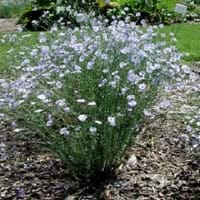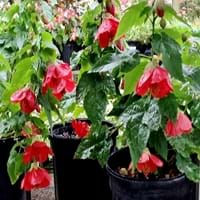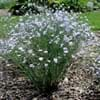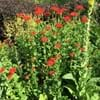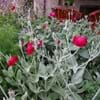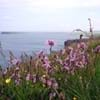Type
Perennial
Tender Perennial
Origin
Europe, Asia
Hybrid origin
Types
Winged flax, Bristle flax, Fairy flax
Not available
Habitat
Cultivated Beds
subtropical regions
USDA Hardiness Zone
4-8
8-10
Sunset Zone
2a, 2b, 3a, 3b, 4, 5, 6, 7, 8, 9, 10, 11, 13, 14, 15, 16, 17, 18, 19, 20, 21, 22, 23, 24
H1, H2, 8, 9, 12, 13, 14, 15, 16, 17, 18, 19, 20, 21, 22, 23, 24
Habit
Clump-Forming
Oval or Rounded
Flower Color
Blue, Sky Blue
Pink, Peach
Flower Color Modifier
Bicolor
Not Available
Fruit Color
Tan
Not Available
Leaf Color in Spring
Green, Blue Green
Green, Gray Green, Dark Green, Ivory
Leaf Color in Summer
Green, Blue Green
Green, Gray Green, Dark Green, Ivory
Leaf Color in Fall
Green, Blue Green
Green, Gray Green, Dark Green, Ivory
Leaf Color in Winter
Light Green
Green, Gray Green, Dark Green, Ivory
Leaf Shape
Narrow
Maple shaped
Plant Season
Summer
Spring, Summer, Fall, Winter
Sunlight
Full Sun, Partial Sun, Partial shade
Full Sun, Partial Sun
Type of Soil
Loam, Sand
Loam, Sand
The pH of Soil
Neutral, Alkaline
Acidic, Neutral, Alkaline
Soil Drainage
Well drained
Well drained
Bloom Time
Early Summer, Summer
Indeterminate
Tolerances
Drought
Not Available
Where to Plant?
Ground
Ground, Pot
How to Plant?
Seedlings
Cuttings, Seedlings
Plant Maintenance
Medium
Medium
Watering Requirements
Average Water Needs, Requires watering in the growing season
Do Not over Water, Keep ground moist, Keep the Soil well drained, Requires regular watering
In Summer
Lots of watering
Lots of watering
In Spring
Moderate
Moderate
In Winter
Average Water
Average Water
Soil pH
Neutral, Alkaline
Acidic, Neutral, Alkaline
Soil Type
Loam, Sand
Loam, Sand
Soil Drainage Capacity
Well drained
Well drained
Sun Exposure
Full Sun, Partial Sun, Partial shade
Full Sun, Partial Sun
Pruning
Midseason Pruning, Prune in fall, Remove damaged leaves, Remove dead branches, Remove dead leaves
Prune to stimulate growth, Remove damaged leaves, Remove dead branches, Remove dead leaves
Fertilizers
All-Purpose Liquid Fertilizer
20-20-20 amount
Pests and Diseases
Red blotch
Abutilon mosaic virus, Aphids, Beetles, Scale
Plant Tolerance
Drought
Not Applicable
Flower Petal Number
Single
Single
Foliage Texture
Fine
Medium
Foliage Sheen
Matte
Matte
Attracts
Bees, Butterflies, Flies
Butterflies, Flying insects, Hummingbirds
Allergy
Cyanide poisoning
Not Available
Aesthetic Uses
Showy Purposes
Beautification, Bonsai, Cut Flowers, Decorating walls, Hanging Basket, small hedge, Used as an interior landscaping species
Beauty Benefits
Good for skin
Not Available
Environmental Uses
Air purification
Air purification
Medicinal Uses
Antirheumatic, Carminative, Emollient, Ophthalmic, Poultice, Stomachic
Not Available
Part of Plant Used
Flowers, Seeds
Not Available
Other Uses
Cosmetics, Fibre, For making oil, Used in paper industry
Cut Flowers, Decoration Purposes, Grown in botanical gardens as a specimen, Used as Ornamental plant, Used for Landscaping
Used As Indoor Plant
Not Available
No
Used As Outdoor Plant
Yes
Yes
Garden Design
Mixed Border, Rock Garden, Wall, Wildflower
Bedding Plant, Container, Feature Plant, Foundation, Hedges, Mixed Border, Topiary / Bonsai / Espalier, Tropical
Botanical Name
LINUM perenne
ABUTILON 'Savitzii'
Common Name
Perennial Flax, Blue flax, Alpine flax
Flowering Maple, Parlour Maple
In Hindi
Blue Flax Plant
flowering maple
In German
Blaue Flachspflanze
Schönmalve
In French
Bleu lin Plante
érable floraison
In Spanish
Planta de lino azul
arce de floración
In Greek
Μπλε Λίνο Φυτών
ανθοφορία σφενδάμου
In Portuguese
Planta do linho azul
de bordo florescimento
In Polish
Niebieski roślin lnu
klon kwitnienia
In Latin
Blue linum Planta
Abutilon
Phylum
Magnoliophyta
Magnoliophyta
Class
Magnoliopsida
Magnoliopsida
Family
Linaceae
Malvaceae
Clade
Angiosperms, Eudicots, Rosids
Angiosperms, Rosids
Tribe
Not Available
Malveae
Subfamily
Not Available
Malvoideae
Number of Species
Not Available
Importance of Blue Flax and Flowering Maple
Want to have the most appropriate plant for your garden? You might want to know the importance of Blue Flax and Flowering Maple. Basically, these two plants vary in many aspects. Compare Blue Flax and Flowering Maple as they differ in many characteristics such as their life, care, benefits, facts, etc. Every gardener must at least have the slightest clue about the plants he wants to plant in his garden. Compare their benefits, which differ in many ways like facts and uses. The medicinal use of Blue Flax is Antirheumatic, Carminative, Emollient, Ophthalmic, Poultice and Stomachic whereas of Flowering Maple is Not Available. Blue Flax has beauty benefits as follows: Good for skin while Flowering Maple has beauty benefits as follows: Good for skin.
Compare Facts of Blue Flax vs Flowering Maple
How to choose the best garden plant for your garden depending upon its facts? Here garden plant comparison will help you to solve this query. Compare the facts of Blue Flax vs Flowering Maple and know which one to choose. As garden plants have benefits and other uses, allergy is also a major drawback of plants for some people. Allergic reactions of Blue Flax are Cyanide poisoning whereas of Flowering Maple have Not Available respectively. Having a fruit bearing plant in your garden can be a plus point of your garden. Blue Flax has no showy fruits and Flowering Maple has no showy fruits. Also Blue Flax is flowering and Flowering Maple is not flowering . You can compare Blue Flax and Flowering Maple facts and facts of other plants too.
